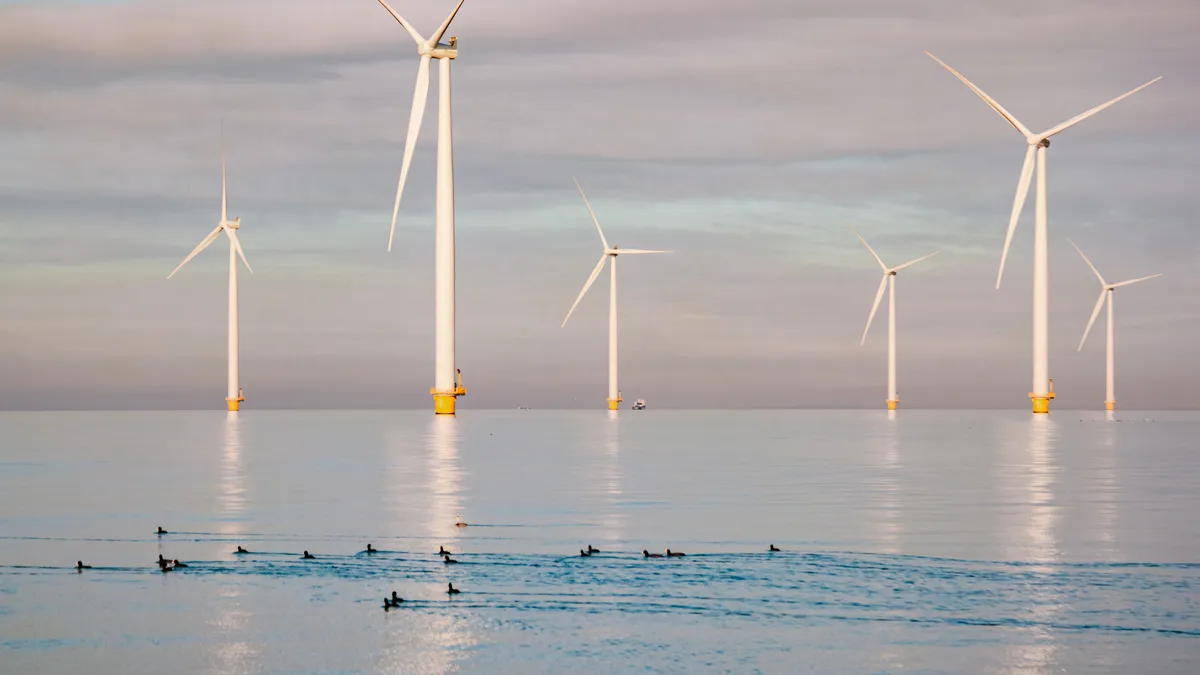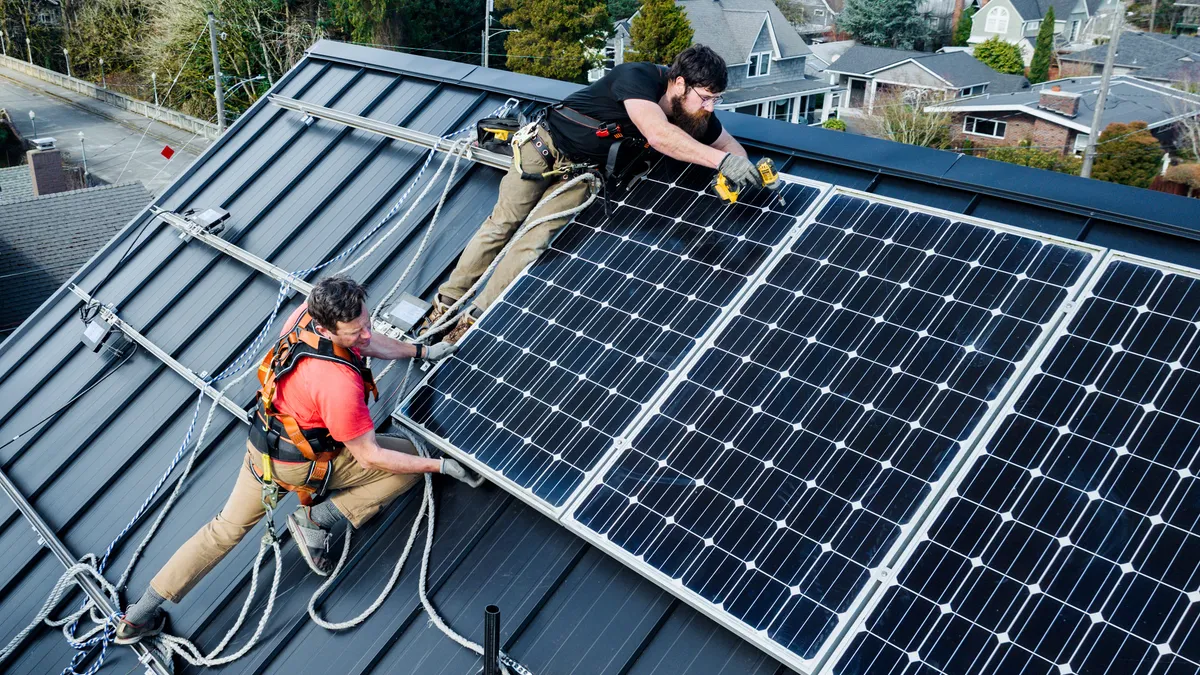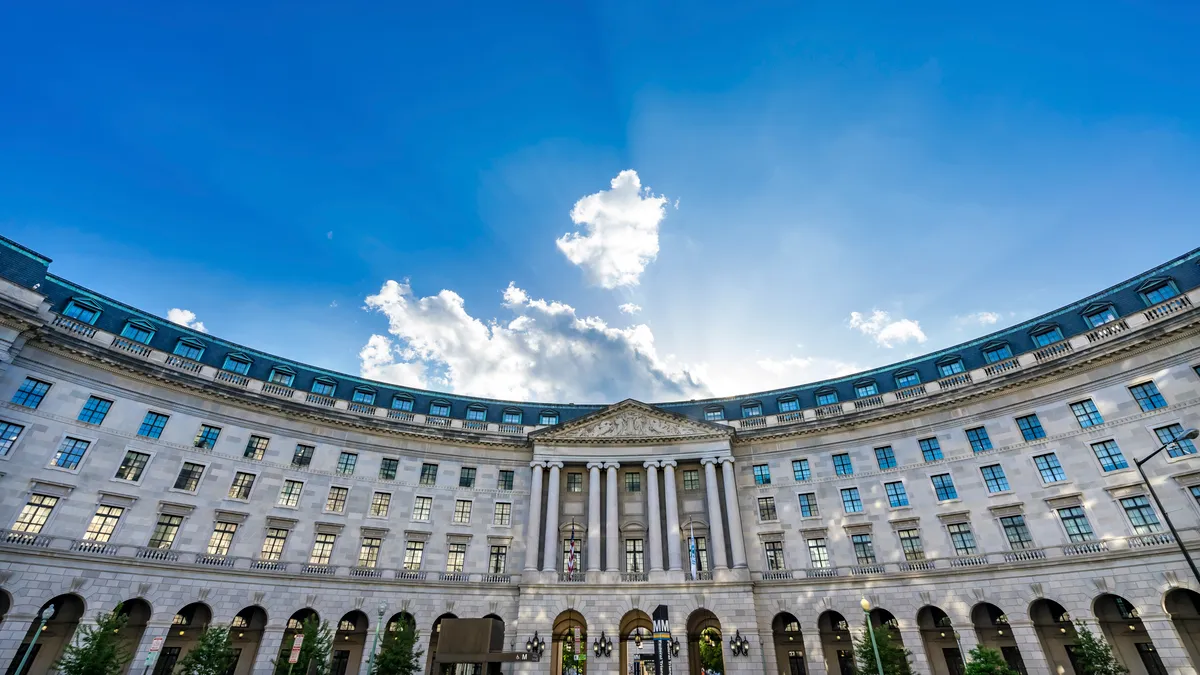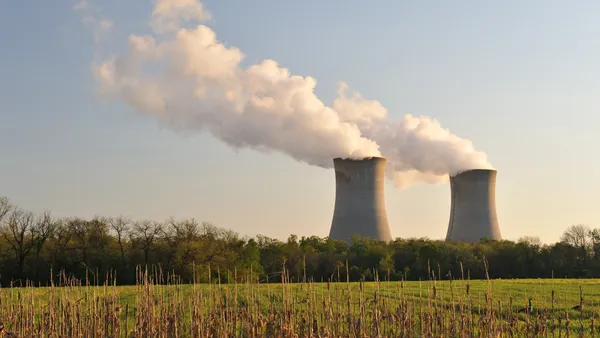Solar interests squared off once again Tuesday in another marathon hearing at the U.S. International Trade Commission. The hearing follows a highly contested decision from the agency that found cheap imported solar modules caused severe harm to a pair of financially-struggling U.S. solar manufacturers.
The ITC took testimony from more than 50 stakeholders — a range of U.S. politicians, embassy representatives, solar installers and industry analysts — over potential remedies designed to revive the struggling domestic manufacturing industry. The investigation comes as part of a rare Section 201 investigation under the Trade Act of 1974.
Georgia-based Suniva and Oregon-based SolarWorld, the two petitioners, argue their proposed remedies will stabilize prices, ramp up production and ensure market share for domestic manufacturers. Opponents, however, worry any remedy could cost the domestic solar industry up to 80,000 jobs by 2020. Solar accounted for nearly 40% of new U.S. generating capacity in 2016.
But the final decision rests with President Donald Trump, a daunting prospect for much of the solar industry. Trump's protectionist tendencies and public disdain for solar sparked qualms over what the future remedies for import relief could look like.
The hearing also revealed deep rifts within the solar industry over the broader implications for the sector should a tariff and floor price or quotas be imposed. Representatives from power companies like NRG and NextEra expressed doubt in their testimony over the fate of a growing pipeline of solar projects should the petitioners’ proposals be approved. And solar installers, like Sunrun, fear they will have to lay off thousands of workers.
But tariff supporters say implementing these measures would help America return to a robust manufacturing sector. And, they noted, SEIA remained silent on the 30 domestic manufacturers that fell victim to the glut of cheap Asian solar modules and cells. However, SolarWorld and Suniva's post-remedy plans did not satisfy regulators, who requested more detailed steps in post-hearing briefs.
A final decision is months away, but the uncertainty could have immediate and wide-ranging consequences for the solar sector in the U.S. and abroad, complicating long-term contracts with utilities and harming vulnerable domestic solar markets. It also hands President Trump an opportunity to flex his international trade muscles and fulfill campaign promises to prioritize American jobs.
The battleground
Earlier this year, Suniva and SolarWorld petitioned the ITC to implement safeguard measures on imported crystalline silicon photovoltaic solar panels. The culprit? Cheap and subsidized solar modules and cells from Asian countries, particularly China, the petitioners claim.
SolarWorld already petitioned the ITC for relief from Chinese and Taiwanese imports in 2014. The ITC granted the petition, which was filed under its anti-dumping duty measure. The new tariffs, if any, would be added on top of these already in place.
To ease the glut, the companies proposed a tariff of $0.40/watt on imported solar cells and a $0.78/watt floor price on imported modules but revised them after the injury ruling.
Now they are pushing a $0.25/watt tariff for solar cells that would drop to $0.235/watt over a four-year span. For solar modules, they proposed declining tariffs starting at $0.32/watt and falling to $0.29/watt in the same timeframe.
In addition to these tariffs, Suniva proposed a declining floor price of $0.74/watt for solar modules that falls to $0.64/watt. SolarWorld requested quotas of 0.22 GW on imported cells and 5.7 GW on imported modules in 2018, which would also ratchet down over four years. Both petitioners told the ITC they want a combination of tariff and quota or floor price, and to stay in place for the full four-year timeline.
SEIA, on the other hand, proposed softer remedies aimed at preserving the competitiveness of the U.S. solar industry: a licensing fee for imports. Those fees, set at 0.5%, could generate $192 million, while a 1% fee would raise $384 million in revenues, SEIA said. The money could “come straight from foreign manufacturers and be delivered to American manufacturers.”
Battle over remedies
SEIA and its allies vehemently oppose the injury ruling, and have directed their lobbying for softer remedies straight to the White House.
Suniva and SolarWorld, on the other hand, argue these tariffs will stabilize prices, ramp up production and ensure market share for domestic manufacturers. They also proposed anti-circumvenstion efforts to ensure countries under the safeguard measure do not shift manufacturing bases to a country exempt from the Section 201 measures.
In his opening statements, Suniva’s counsel, Matthew McConkey, also took a shot at SEIA’s vigorous lobbying and media strategy.
“Let me take a minute to address SEIA’s remedy strategy,” he told the crowd. “SEIA’s remedy brief proved the old legal adage: if you have the facts on your side, pound the facts. If you have the law on your side, pound the law. If neither is on your side, pound the table.”
But opponents say the two companies brought forth a flawed trade case in an attempt to cover up faulty business decisions and failure to meet contracts.
“If tariffs are imposed, good-paying solar jobs will be lost,” said Michael O’Sullivan, senior vice president of development for NextEra Energy Resources at the hearing. Increasing prices in order to boost deployments is “financial alchemy,” he added.
Both sides did agree that imposing these tariffs will affect the thriving solar market in the U.S. But the extent of the impact is hotly debated. MJ Shiao, director of Americas research at GTM Research, testified that a 30% tariff with annual stepdowns “would jeopardize 38% of [total] solar deployments.”
The petitioners in their testimony noted about 40% of the solar demand in the U.S. is “inelastic,” e.g., mandated by state policies. But that leaves 60% of the solar market vulnerable to the consequences of the remedy proposals.
“I cannot stand here and say there will be no market impact,” Timothy Brightbill, counsel for SolarWorld told Chairman Rhoda Schmidtlein, a Democrat and Obama appointee, after she questioned them on demand impacts.
Historically, renewables standards and incentives helped drive solar deployment, but that is swiftly changing, stakeholders noted. GTM Research noted less than 50% of total solar deployments now come from RPS standards.
The recent expansion of the Energy Department’s popular SunShot initiative is an example of the changing times for solar. The DOE announced SunShot hit its cost goals three years early and attributed its success to the decline in module prices.
The marginal cost of solar leaves little wiggle room for increasing prices, stakeholders testified. Utilities could turn to alternative energy resources to meet power needs. Competition from cheap natural gas and wind “leaves little room for inflation above today’s solar prices,” said Craig Cornelius, senior vice president of renewables for NRG Energy.
Industry impacts
But just how broad the impacts of the potential remedies will be remains to be seen. Already, SolarWorld said it is preparing to ramp up its operations and recruit for 200 jobs following the remedy decision. SolarWorld CEO Juergen Stein testified the remedies will sprout 35,000 domestic manufacturing jobs. But commissioners remained skeptical of Suniva and SolarWorld’s rehabilitation plans for their businesses.
“You envision that there would be 35,000 jobs created at minimum,” Schmidtlein said. "That sounds like a wish list to me."
Schmidtlein, with two of her colleagues, pressed both companies to file additional details over future operations following the remedy decision.
Suniva filed for bankruptcy in April this year, before filing the petition for import relief. SolarWorld’s German parent company filed for insolvency shortly afterwards and joined Suniva’s quest. Suniva told the ITC that details about restarting operations are scant until it emerges from the bankruptcy process by the end of the year. But Suniva assured the ITC that plans are being crafted to begin operations as soon as possible.
SEIA and its supporters latched onto these vague plans as proof the trade case is a guise for poor business decisions.
"It's hard for us to see a scenario where these companies could get legally permissible trade relief that would enable them to compete in any market," said SEIA President Abigail Hopper. "Our perspective is that while trade restrictive relief is not appropriate for these two poorly-run companies, we remain committed to supporting domestic manufacturing and are advocating for creative solutions that can resolve this deeply flawed case."
Hopper and SEIA member SunPower's CEO Tom Werner condemned imposing tariffs in particular, saying those remedies "pick winners and losers." And Ed Fenster, a board member of Sunrun, said in his view the quotas are the “worst."
None of them expressed any preference for a tariff or a combination of tariff and floor price or quota. Touting their “innovative” licensing fee, SEIA said it’s key to meeting remedy requirements under Section 201 without restricting trade.
But even after the ITC makes recommendations, the final decision will come from the Trump administration.
Down the road
The ITC now has until Nov. 13 to recommend remedies to the White House. After that, Trump has 90 days to chart a course, and he has the option to take the ITC’s recommendation, impose stricter remedies or do nothing.
“I want tariffs. And I want someone to bring me some tariffs,” President Trump has said without referring to any particular industry. The solar trade case fits neatly into his pledge to prioritize American jobs and manufacturing, despite the fact that it could cost jobs in some segments of the solar industry. His staff has also openly supported coal and other fossil-fuel sources, and imposing tariffs that could curtail solar’s growth could revive these generating sources.
On a broader scale, it could give Trump some leverage at the negotiating table with the Republic of China. Fang Liu, an embassy representative for China, questioned the legality of the injury ruling, saying it “violated the obligations under the [World Trade Organization] Safeguard Agreement.”
Though the country is taking a wait-and-see approach, it appears China would likely challenge any of the remedies at the WTO.
The case has brought together an unlikely assortment of allies. Conservative think tanks such as the Heritage Foundation and the American Legislative Exchange Council have aligned with SEIA, Duke Energy and NextEra against the petition over free market concerns.
If Trump should side with the petitioners, it would mark his departure from the economic blueprint laid out by his conservative allies, like Heritage, and potentially open a battle over trade abroad. The ITC found substantial cause for injury from Mexican and South Korean imports as well.
The ITC is set to vote on its recommendations Oct. 31, which are slated to be sent to Trump by Nov. 13.






















